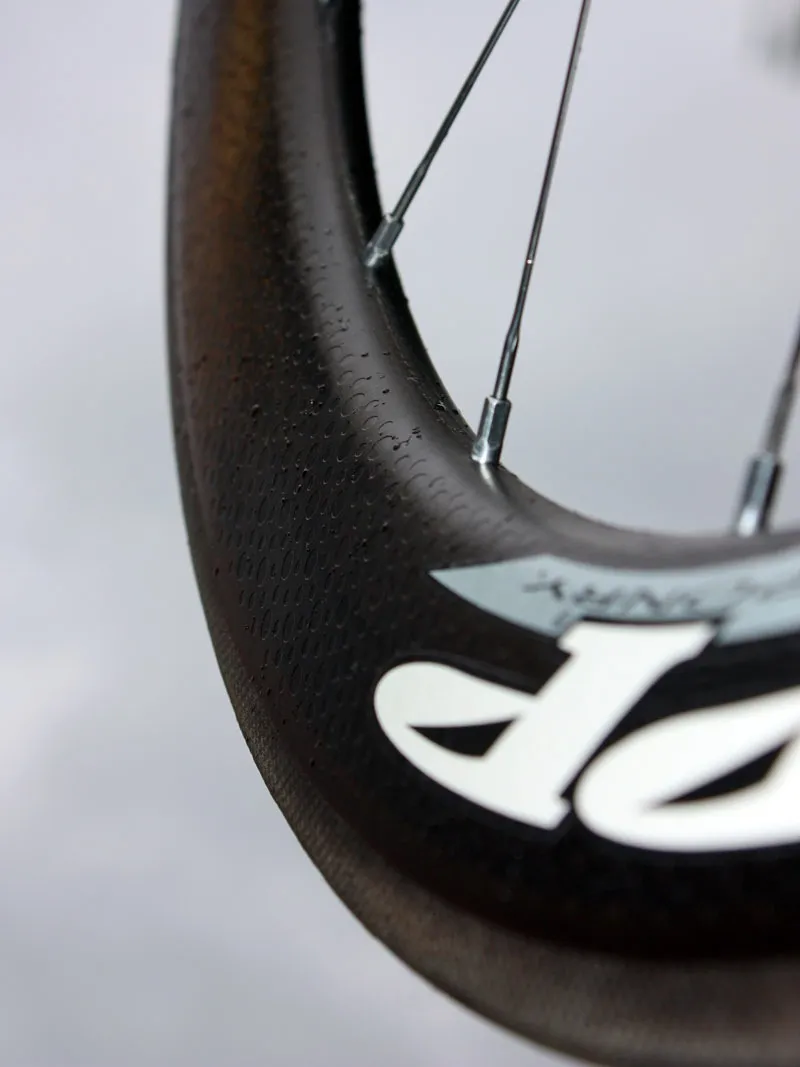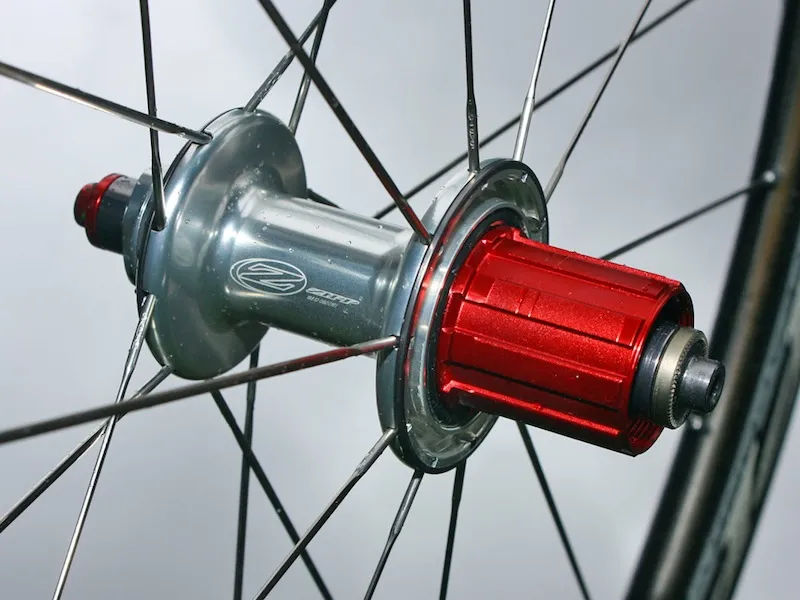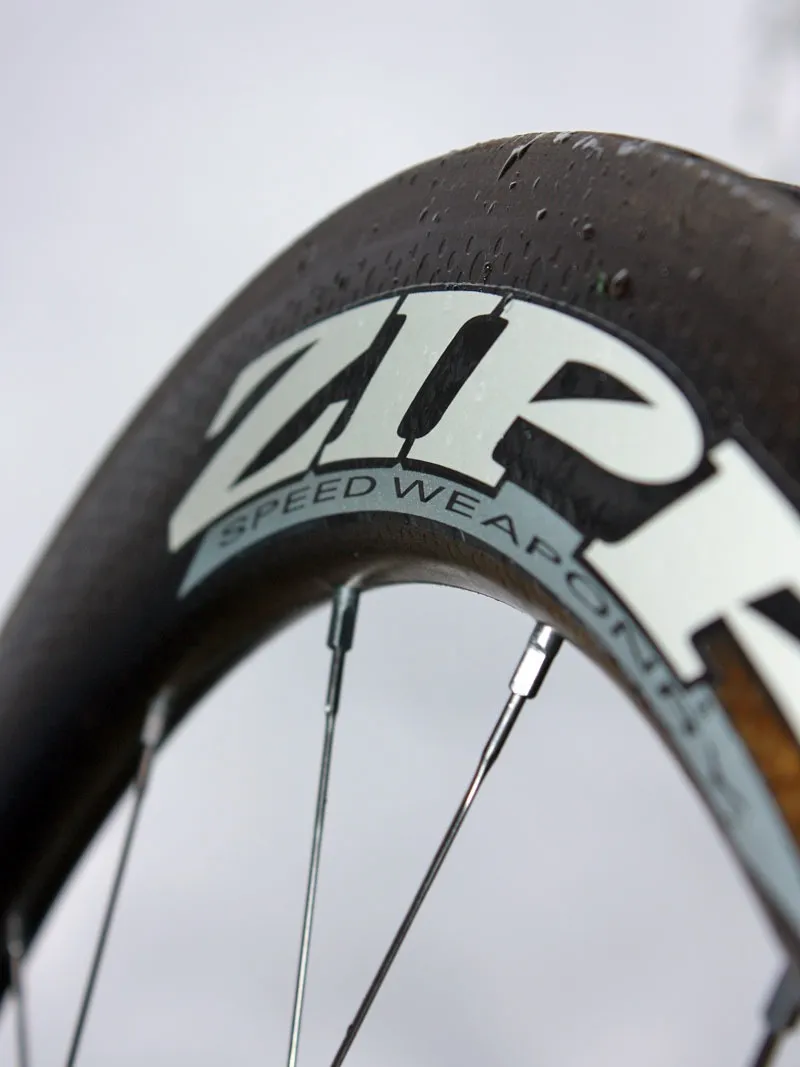Zipp debuted their first-ever all-carbon road clincher wheels today in Amsterdam, The Netherlands, just prior to the start of the Giro d'Italia.
While the company acknowledge that they're late to the game after years of alloy-and-carbon models, they boldly claim the new 404 Carbon Clincher to not only be "the most aerodynamic clincher wheel ever produced" but also the "strongest carbon clincher on the market".
Zipp engineers say the key to the 404 Carbon Clincher's performance is its novel 'Firecrest' rim profile, which is notably wider than the norm but isn't just a scaled-up and 'clincher-ised' version of their current 303 tubular. The 58mm-deep shape measures 25.5mm across at the tyre bead but an even-wider 27.5mm just past the rim's midsection, and the nose sports an especially large radius as compared to the sharper trailing edges more commonly used elsewhere.

The unusual 'Firecrest' rim shape is very wide at the tyre (25.5mm) but even wider closer to the spoke bed (27.5mm). The large-radius nose is said to produce lower drag figures at a wider range of yaw angles
When paired with a 21-23mm tyre (Zipp say even 35mm ones are okay), Zipp claim the 404 Carbon Clincher's wind tunnel tests place it nearly on par with the much deeper 808, plus the blunt nose retains that performance at a greater range of yaw angles while being far easier to handle in crosswinds as well.
In addition, the extra width lends extra tyre casing support for improved cornering traction and feel as well as about 18 percent greater air volume for a more comfortable ride and fewer pinch flats.
While the 404 Carbon Clincher's aerodynamics are a result of its shape, the claimed braking performance and strength come about from the proprietary high-temperature thermoplastic resins the company developed over a two-year period with the help of tools such as a US$20,000 thermal imaging video camera.
According to Zipp technical director Josh Poertner, the 404 Carbon Clincher is the only carbon clincher rim currently produced that not only passes the rigorous CEN braking test with no rider weight restrictions but can do it 12 times over. It reaches maximum surface temperatures of over 360°C (680°F) with no bead hook deformation – a critical piece of information for riders who live in mountainous regions who are concerned about blown-off tyres as they're hurtling downhill.
Naturally, the 404 Carbon Clincher is quite light, too, though not stupendously so. Total weight is 1,557g (718g front, 830g rear) when paired with Zipp's 88/188 hubs and Sapim CX-Ray straight-pull bladed stainless steel spokes. Claimed rim weight is around 525g, suggesting it should make a good all-around option for riders who don't want to fuss with tubulars and aren't interested in a dedicated set of climbing wheels.

The new 404 Carbon Clincher will use Zipp's now-familiar 88/188 hubs
Suggested retail price on the new 404 Carbon Clincher is US$2,700 – including rim tape, skewers, Tangente cork pads and valve extenders – and production models are shipping as early as Monday (10 May).
Some may wonder when the Firecrest rim shape will make its way through the rest of Zipp's wheel line – after all, if it's so fast, shouldn't Zipp simply adopt it across the board?

Compared to the current 404 clincher, the new 404 Carbon is far wider throughout, supposedly delivering superior aerodynamic performance in the process
Yes and no, says Poertner. In fact, he says the company's wind tunnel testing has demonstrated that aerodynamic characteristics don't necessarily scale well, and even adapting for tubular versus clincher tyres requires significantly different rim shapes. Still, he admits we're likely to see some Firecrest design elements incorporated into a new 808 rim – and possibly others – come Eurobike, and the company are also continuing to develop their range of Tangente aero tyre profiles.
In the meantime, we'll hopefully have a set of long-term testers in our hands before the end of the month – just in time for the hot Colorado summer.



